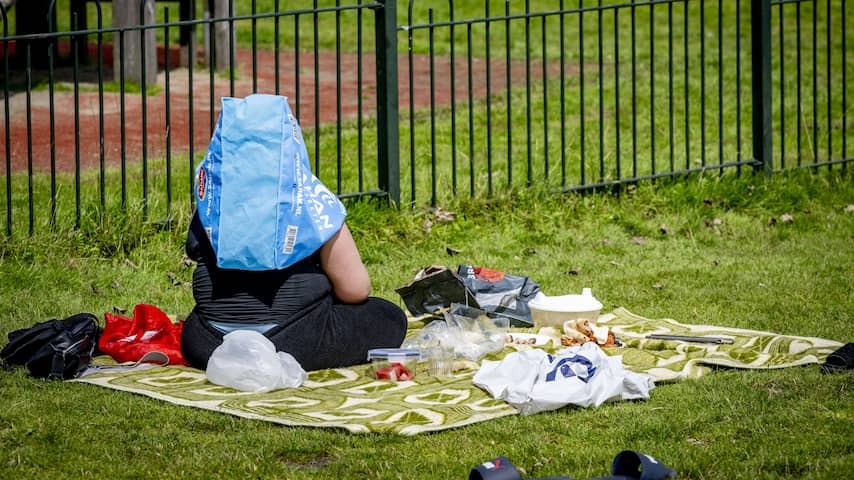
The heat that grips Europe is no longer an exception. In fact, Europe is the fastest-warming major continent. This also concerns our readers, as we notice on our reaction platform NUjij. Here we answer your most stimulating and frequently asked questions about climate change.
Throughout the centuries, there have been many different climates. How do we know that today’s climate change is caused by humans?
Jeroen Kraan: “The scientific literature that proves that humans are behind the current climate change could fill many libraries by now. It is true that the climate also changed in the past; it was sometimes much warmer than it is now. That was long before humans walked the earth, and those changes were much slower.”
“Moreover, changes were then caused, for example, by very active volcanism or other natural processes. That is not the case now, but we are burning enormous amounts of fossil fuels, with a lot of CO2 emissions. This CO2 (and other greenhouse gases) puts a ‘blanket’ over the earth, causing it to warm up. The evidence for this is irrefutable.”
Why is so much emphasis placed on reducing CO2 emissions and not on other greenhouse gases?
Emma van Bergeijk: “Carbon dioxide, or CO2, gets a lot of attention because people emit the most of that gas out of all greenhouse gases. CO2 is therefore the biggest driver of the greenhouse effect (global warming), and thus climate change.”
“CO2 is not the strongest greenhouse gas emitted by humans. Methane, for example, is much more powerful than carbon dioxide. But less of it is emitted.”
“There is increasing attention for methane in science and politics. Scientists agree that this gas contributes to climate change. Methane emissions come, for example, from agriculture: manure from cows emits methane. But the gas is also released during the production of LNG, liquid gas.”
“An important difference is that CO2 remains in the atmosphere much longer than methane. Forests and oceans absorb part of the CO2, but not enough to slow down climate change.”
How quickly is climate change worsening, and how long do we have until it becomes uninhabitable outdoors due to heat or other extremes?
Jeroen: “It will not quickly become uninhabitable in the Netherlands due to heat, although summer extremes may increase. Stronger heat waves also bring extra mortality, although we can partly counteract that by ensuring better cooling of cities and buildings.”
“In countries that are already much warmer, such as India, heat poses a much greater threat. There, temperature extremes could, according to experts, move towards the unsurvivable.”
“In the longer term, sea-level rise poses an existential threat to a large part of the Netherlands. If the climate continues to warm strongly, this can lead to many meters of sea-level rise. That is a slow process.”
“For example, at 2 degrees of warming, the sea level may have risen by 3 meters by 2300, predicts the KNMI. With higher emissions, that could be many meters more. The Netherlands is currently reinforcing its dikes to be able to handle a sea-level rise of up to 1 meter. Moreover, a higher sea level is not only a problem for water safety. Salinization of drinking water and agricultural land is a problem that we will notice much earlier.”
Why does climate change affect Europe more than other parts of the world?
Emma: “Europe is the fastest-warming major continent. Warming here is twice as fast as in the rest of the world. The temperature on land has already warmed by more than 2 degrees, the rest of the world has not (yet). The effect is greatest in Southern, Eastern, and Central Europe.”
“Scientists think that this is because Europe has a lot of landmass and is relatively close to the Arctic. Warming is happening very quickly there. It is all mentioned by the IPCC, the world’s most important climate panel.”
“The consequences in densely populated Europe are already measurable: extreme weather, such as forest fires in Southern Europe, floods in Central Europe, heat waves, peak rainfall, and persistent drought.”
Aren’t we as humanity simply too late to turn the tide?
Emma: “This feeling is very understandable. It is true that we are already in the midst of climate change. Yet it is not too late to stop the biggest and worst consequences. For that, it is necessary that the world acts together – and quickly too.”
“In the historic Paris Agreement, all countries in the world have agreed to limit warming to 2 degrees, with the aim of 1.5 degrees since industrialization. That is an important limit with which dangerous climate tipping points can be prevented.”
“The difference between, for example, 1.5 degrees and 3 degrees of warming is immense. With an ambitious global approach to climate change, the problem can be kept within limits and the earth remains habitable. Because, as climate scientist Bart van den Hurk once said to me: ‘Every tenth of a degree counts.'”